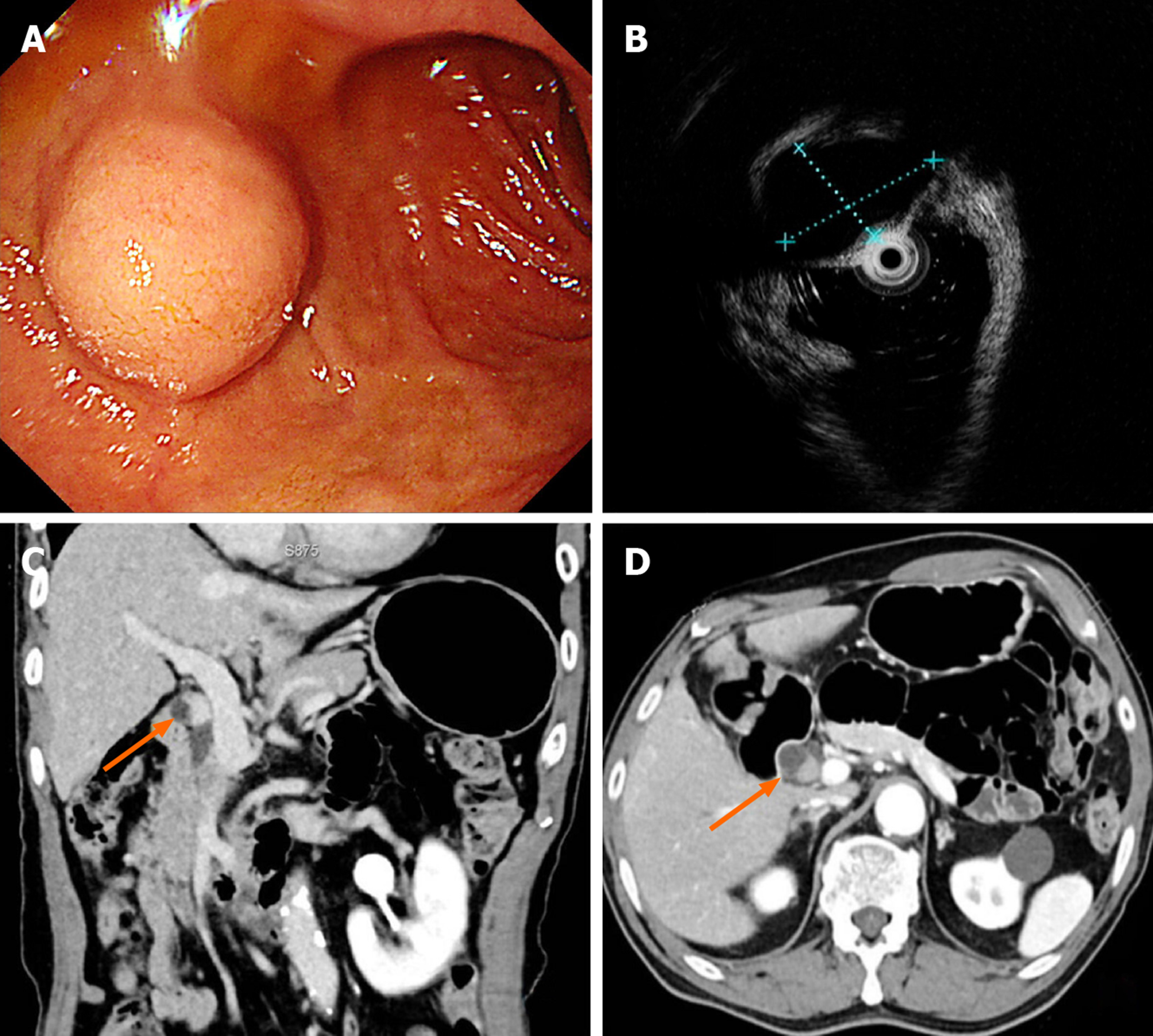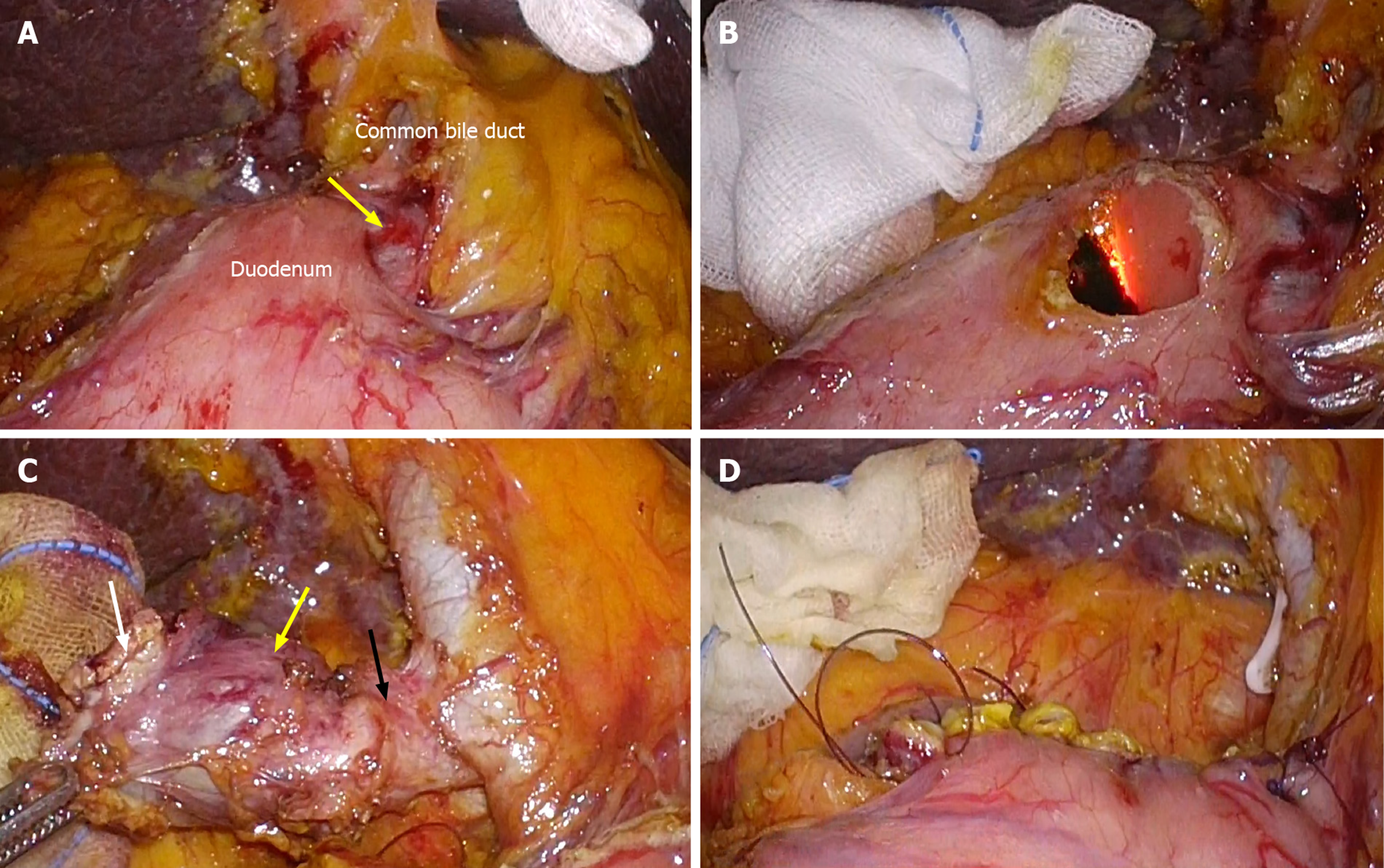Copyright
©The Author(s) 2020.
World J Clin Cases. Sep 6, 2020; 8(17): 3821-3827
Published online Sep 6, 2020. doi: 10.12998/wjcc.v8.i17.3821
Published online Sep 6, 2020. doi: 10.12998/wjcc.v8.i17.3821
Figure 1 Preoperative tumor evaluation.
A: Upper gastrointestinal endoscopy showing a lesion protruding into the lumen of the duodenal bulb; B: Endoscopic ultrasonography showing a hypoechoic lesion 1.8 cm in size; C: Coronary view of abdominal computed tomography (CT) showing a small enhancing nodule 1.4 cm in size (orange arrow) between the cystic duct and the duodenal bulb; D: Axial view of abdominal CT showing the lesion (orange arrow).
Figure 2 Histological findings of tumor and specimen.
A: Microscopic view of a neuroma showing spindle cell proliferation arranged in short bundles and intervening cleft artifact (white arrows, hematoxylin and eosin staining; magnification x 200); B: Lesion tests positive for S100 protein; C: Macroscopic findings of resected duodenal wall (yellow arrow), lesion (orange arrow), and cystic duct (white arrow); D: Incised specimen showing a hard mass (blue arrow) with the cystic portion (orange arrow) adjacent to the duodenal wall (yellow arrow) and the cystic duct (white arrow).
Figure 3 Operative procedure of laparoscopic endoscopic cooperative surgery for duodenal neoplasms.
A: Lesion (yellow arrow) between the duodenal bulb and common bile duct; B: Partial perforation of the duodenal wall using insulation-tipped electrosurgical knife during endoscopy; C: Lesion (yellow arrow) is difficult to identify between the resected duodenal wall (white arrow) and cystic duct (black arrow); D: View after resection of lesion and repair of duodenal wall.
- Citation: Kim DH, Park JH, Cho JK, Yang JW, Kim TH, Jeong SH, Kim YH, Lee YJ, Hong SC, Jung EJ, Ju YT, Jeong CY, Kim JY. Traumatic neuroma of remnant cystic duct mimicking duodenal subepithelial tumor: A case report. World J Clin Cases 2020; 8(17): 3821-3827
- URL: https://www.wjgnet.com/2307-8960/full/v8/i17/3821.htm
- DOI: https://dx.doi.org/10.12998/wjcc.v8.i17.3821











